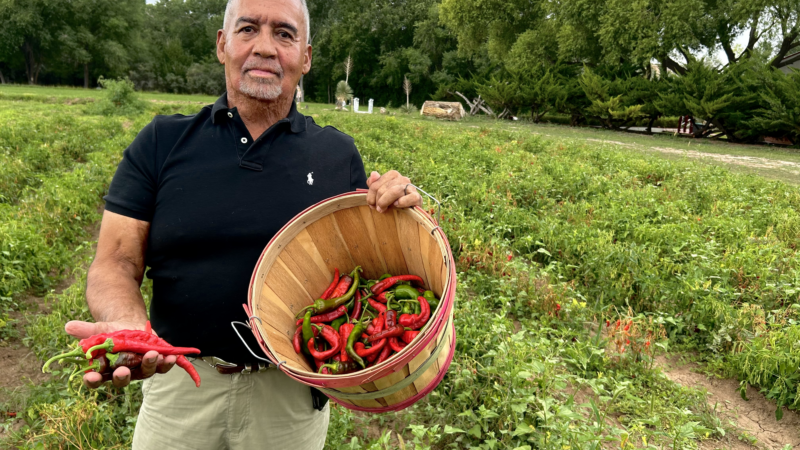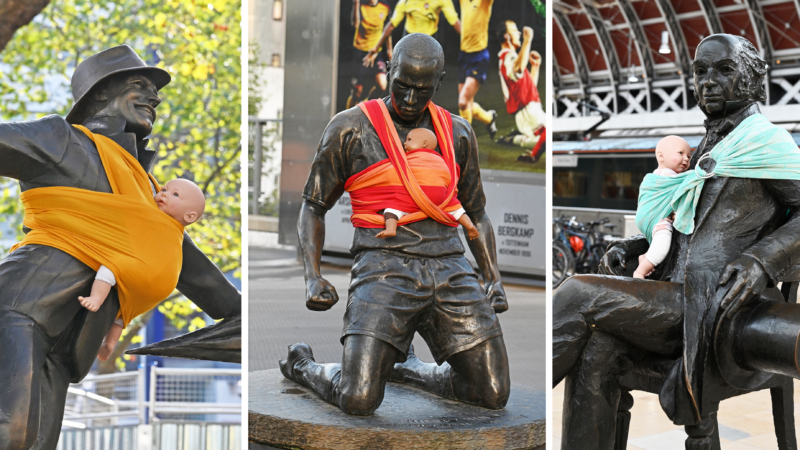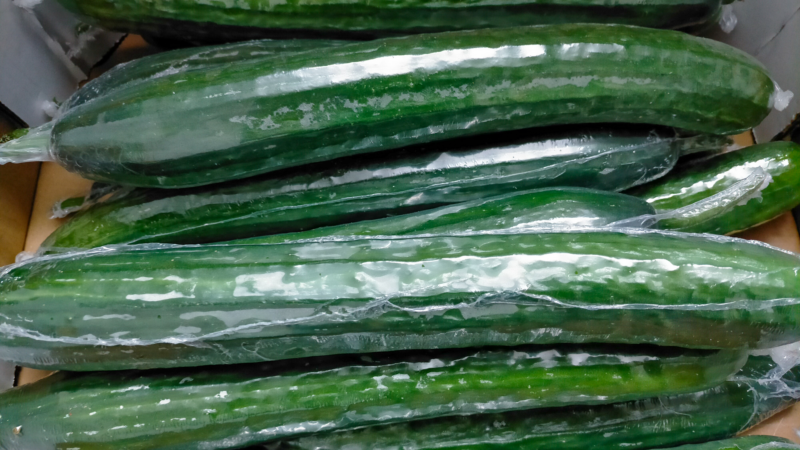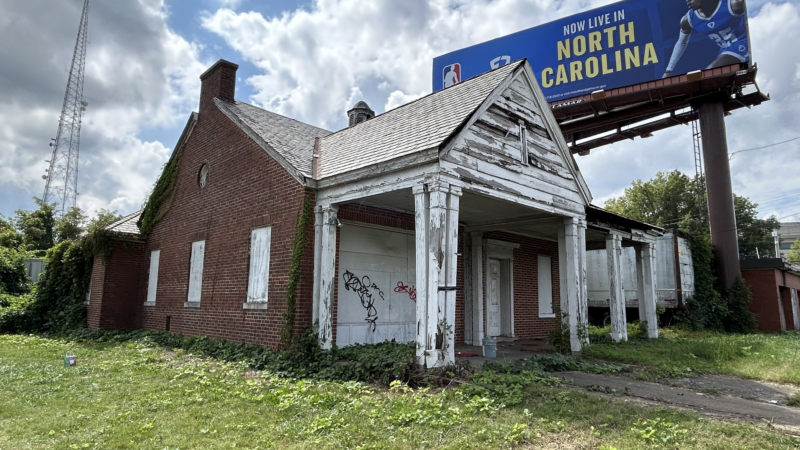A rare treat getting rarer: Chimayo Red, New Mexico’s ‘holy chile’
The two travelers from New Orleans touched their fingers to the reddish-orange chile powder on a napkin, put it on their tongues, and then looked at each other in astonishment.
“Very rich, full-bodied, earthy,” said Erin Seckso.
“I’m a native Louisianan,” said her companion, Letty Boelte, “and I’m used to hot spices. This is something pure. And different.”
They’re not alone. Many chefs and capsaicin connoisseurs consider red chile from the tiny village of Chimayo, nestled in the Sangre de Cristo Mountains between Santa Fe and Taos, to be the most delicious pepper in the American Southwest. But it’s harder and harder to find.
This tasting took place at El Potrero Trading Post, a 76-year-old store that also sells turquoise jewelry, folk art and Catholic religious items. Potrero carries two kinds of chile: local Chimayo chile and Hatch chile. (In New Mexico, they spell it with an “e”.)
Hatch is by far the most popular New Mexico chile. The peppers are long, hardy and hybridized, and you can find them fresh outside the state. They’re farmed on an industrial scale in southern New Mexico.
By contrast, Chimayo peppers are smaller and curvy. They’re artisanally grown from heirloom seeds originally planted by Pueblo Indians and adopted by Spaniards 400 years ago. The red pods are dried the old-fashioned way, in hanging bunches called ristras — an iconic symbol of the Land of Enchantment.

“The difference is Chimayo chile has a much better flavor to it,” said the store’s third-generation proprietor, Raymond Ball. “Here in New Mexico, we don’t use chile as a seasoning. We use chile as an ingredient. It wakes up every taste bud, and it’s the main flavor in your mouth.”
At El Potrero, a pound of Chimayo red sells for a hefty $50; a pound of Hatch red is $7.
“I’m surprised we can still provide Chimayo chile in our store,” Ball continued, “given the fact that there are fewer and fewer farmers growing it. The demand is high and there are times when we just run out and there’s nothing we can do about it.”
Just up the road from El Potrero is Rancho de Chimayó, one of the most storied restaurants in New Mexico, founded in 1965 by Arturo and Florence Jaramillo. Mrs. Jaramillo still oversees day-to-day operations, sitting at her desk as waitresses rush past with steaming plates of blue corn enchiladas, carne adovada, and chile rellenos. But even this famous restaurant can’t locate enough Chimayo chile to use it in their James Beard award-winning kitchen.
“It’s the best. The taste is wonderful,” Jaramillo said. “I mean, it takes three ristras to make a pound of red chile. Nobody in the valley has that much chile. As the older people die, the younger people won’t raise it.”
The village is actually most famous not for its chiles, but for El Sanctuario de Chimayo, a legendary Catholic pilgrimage site and a lovely example of Spanish colonial architecture. Tens of thousands of the faithful make pilgrimages to the shrine during Holy Week, with many stopping in the tiny room off to the side to scoop up some “holy dirt” from a pit in the floor. Believers swear it cures all kinds of maladies, and the anteroom is filled with crutches and testimonials.

“A lot of people believe that the holy dirt…contains a lot of the same elements as the chile does,” says Jason Blum, co-owner of Chimayo Chile Brothers. “I mean, you drive around the Sanctuario up there, and there’s pictures saying ‘holy chile.’ ”
His company buys chile powder locally and ships it anywhere in the world for $68/pound. One of his online retailers sells the holy chile on its website for the unprecedented price of $100/pound.
All of this beg the question, if it’s so valuable, why is there so little of it? Locals estimate fewer than 500 acres are planted every year, compared to 50,000 acres of Hatch cultivated in New Mexico and surrounding states.
“Truth be told, there’s an epidemic going around. And it has a lot to do with the kids and the youth, and it’s drugs,” said Patricio Chavez, a fifth-generation farmer and artist in town. He sells the heritage pepper for $20 for 12 ounces in his family’s store, the Chimayo Chile Shop.
“We don’t have that generational grandfather, father, son. It’s all broken. Who’s gonna teach the farming if the grampas and dads don’t do it?”
Chavez buys his chile powder—the rich-red color of a New Mexico sunset—from a grower about 10 miles away, technically outside of the Santa Cruz River Valley where Chimayo is located.
“There’s gardens from here to Espanola that are growing the nativo seeds,” Chavez said. “So it’s not just Chimayo. And they’re all wonderful.”
If you Google “Chimayo chile for sale,” lots of online sellers pop up offering bags of ground chile for well under $15. Local retailers say those products are blatantly counterfeit, but there’s nothing they can do about it.
“It’s just the way businesses are,” said Patricio Chavez with a smile. “Anything you put ‘Chimayo’ on it’s going to sell.”

Chimayo chile is such a hot commodity that when the biggest grower in the valley finally answered his phone, he evaded an interview and a visit to his fields. “People are already stealing my chiles, man!” he said, asking to remain unnamed.
Finally, a local pepper hobbyist said to come on over and help him harvest.
Fidel Martinez, retired from Los Alamos National Lab, stood in his quarter-acre of knee-high plants growing on his family’s ancestral land. He plucked a handful of the fire-engine-red peppers and tossed them into a basket.
“Look all over, down into the plants,” he called over his shoulder. “Look, they’re hiding down there. Once they’re red, they’re ready.”
FYI, chiles start out green; they turn red when they ripen. It’s all the same plant.
Fidel and Loyda Martinez don’t sell their crop.
“We plant for family and friends and we give it away,” he said.
Their chiles are so valued that a University of New Mexico plant scientist has sent their seeds to gardeners on all seven continents to test their success in different soils. But the couple said it’s just not the same.
“The sand is special,” Fidel said. “It’s the land that makes the chile taste really good.”
Loyda, also retired from Los Alamos, chimed in, “It has a sweet flavor. You can plant it all over the world but the taste is different all over the world. So it’s the dirt and the seed that mixed together that make it so unique, this Chimayo chile.”
Martinez chile powder is special. It’s burnt orange, lighter in color and sweeter than chiles for sale in the village. But all the chile powder tasted in Chimayo establishments was exotically delicious, and a powerful validation of the adage: buy local.
U.K. dads are wrapping baby slings on male statues to push for more paternity leave
The purpose is to raise awareness on the U.K.'s low paternity leave benefits, which currently stand at two weeks of paid time off for new fathers.
Hazardous chemicals in food packaging can also be found in people
Chemicals used in food packaging and linked with health problems have been detected in the human body. The chemicals can move from packaging into food.
As early voting nears in Georgia, all eyes are on whether young voters will turn out
Gen Z and millennial voters make up nearly half of the eligible voting population in this year’s election. In Georgia, the race is on to get them registered before early voting begins this month.
How Biden is getting used to life as a lame duck president
President Biden has been receding from the spotlight as the campaign marches on. But he still holds the highest office in the land for another four months and he’s is trying to make the most of it.
The contest in one New Mexico swing district mirrors a larger, anxious electorate
Democrats and Republicans both think they can win the state's Second Congressional District — one of the swingiest in the country — where immigration and abortion rights are dominating the debate.
In his hometown, Trump’s alleged would-be assassin acted like he was ‘above the law’
Neighbors in Greensboro say Ryan Routh, the man accused of pointing a rifle at the golf course where Donald Trump was playing, wasn't someone they knew well. But he was well-known to law enforcement.








